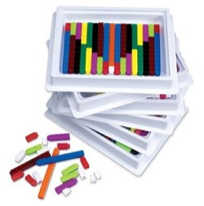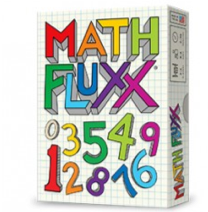
I Do, We Do, You Do: Hands-on Math Resources for You and Your Students
If you’re an educator, “I Do, We Do, You Do” may already be a strategy implemented in your classroom. For those who might not be as familiar, this is the basic concept of this teaching strategy:
- “I Do”: Educator explains the concept and demonstrates the skill.
- “We Do”: Educator and the class practice together.
- “You Do”: Educator transitions to acting as a source for support and guidance as students work independently.
This lesson structure is a great opportunity to create hands-on learning experiences for students; especially in math classes where challenging concepts are introduced, practiced, or remediated through experiential learning.
Access to hands-on math resources is scarce for many First Book educators serving kids in need. Oftentimes, math manipulatives are passed down second, third, or even fourth-hand and have fragments missing, defective objects, or not enough in supply for the classroom.
To support our phenomenal educators, we’ve handpicked the absolute best resources for applied math lessons – and are offering them at low-cost, affordable prices.
These resources are timeless and will stick with you wherever your teaching practice may take you, so feel free to make them your own and write your name on them in permanent marker!
Classroom Clock Kit (set of 25)

Perfect for the “I Do, We Do, You Do” learning tactic, educators love using the Classroom Clock Kit because most everyone in class gets their own clock! The teacher demos on the big clock, each student uses their own clock to practice together, then students practice independently on their own clock.
Primary Measurement Kit

The Primary Measurement Kit has all the tools needed to teach length, capacity, time, mass, time, and temperature in one sturdy bin! Featuring a giant ruler for measuring classroom objects, a bucket balance for comparing the weight of different small toys, a stop-watch for measuring races on the playground, and much more. Your students can practice what they learned by rotating through different centers to practice a variety of skills using the contents of this kit.
Connecting Cuisenaire Rods (carton of six 74 packs)

Connecting Cuisenaire Rods have a ton of great uses for your classroom. The rectangular blocks – in ten different colors and ten different lengths – help students visualize abstract math concepts from basic operations to working with fractions. One of our favorite ways to use them – a pair multiple rods of the same size with 1 cm graph paper to help students practice multiplication. Students place the rods in the lower left corner of the graph paper, trace the rods, remove them and count the squares to solve equations.
When it’s time for your students to practice independently, here are three great resources to help reinforce concepts and create opportunities to practice new skills during “You Do” time:
Math Fluxx

Math Fluxx is a simple and fun way for your students to improve mental-math skills and practice basic operations – with the flexibility to introduce more complex concepts, such as order of operations and exponents. The card game starts with just one basic rule: draw one card, play one card. As cards are drawn and played, the rules of the game change, which offers students a nonthreatening way to practice managing change and uncertainty, in addition to honing other basic math skills.
MathStix

MathStix: Fraction Conversion or MathStix: Multiplication and Division
These sturdy, portable alternatives to flashcards help students develop math fluency. Taken on the go, they make every time a great time to practice math facts, whether waiting in line for lunch or working in math small groups or working individually. They are also great for older students.

Jumbo Place Value Die, Classroom Set (Set of 24 Die)
Dice are a great tool to flip math practice into a game. This unique die set helps kids practice place value. Each box contains six sets of four dice with each die representing a place value from ones to thousands. Students roll their dice and place the die in order: ones, tens, hundreds, thousands. They then put it all together to identify the number they rolled.

Of course, we wouldn’t be First Book if we didn’t include a terrific math read aloud. A Hundred Billion Trillion Stars by Seth Fishman and illustrated by Isabel Greenburg is a great book that can be used to conceptualize large numbers and break them down in a language that kids can understand. First Book educator Paula L. uses this book with her schools reading buddy program. She reports: Fifth graders have loved reading this book to first graders to help them understand STEM concepts through colorful illustrations and a playful tone.
Visit the STEAM section of the First Book Marketplace for tools to help reinforce math and other STEAM concepts in your classroom to influence the next generation of mathematicians, scientists, inventors, and tech-leaders!
